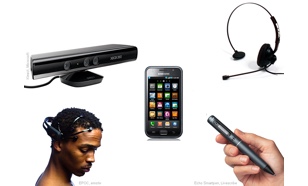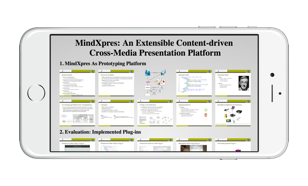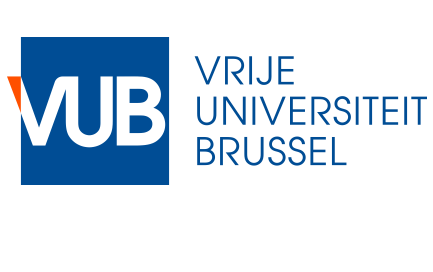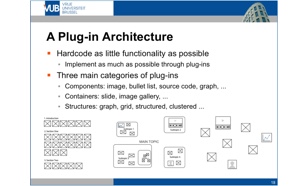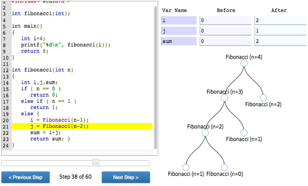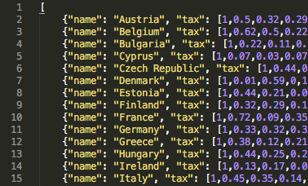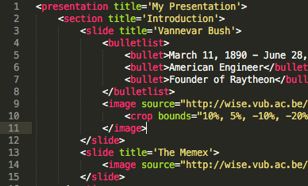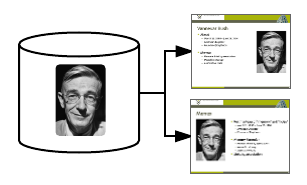Different Presentation Styles
Whereas the classic presentation tools focus on linear slide sequences, other ways of navigating a presentation are becoming increasingly popular. For instance, Prezi provides a spatial layout combined with a zoomable user interface. Another example is Reveal.js that allows branches in slide sequences and that can provide a higher perspective of the layout.
As mentioned in the Plug-in Architecture section MindXpres does not enforce the use of any of these styles but by means of structure plug-ins the presenter can choose a style that suits the content or audience. Currently MindXpres has plug-in implementations for classic slide sequences and a zoomable user interface as used by Prezi. Also a hybrid approach called the "structured" presentation was developed that combines a zoomable user interface with a more structured layout of slides, proving the audience with a better content overview without them getting dizzy.
The plug-in architecture also allows developers to implement new structure plug-ins for other types of visualisation and navigation to suit their use cases. This also allows academics to prototype and evaluate new ideas without the restrictions of existing presentation tools.
Relevant Publications
Feature Overview
